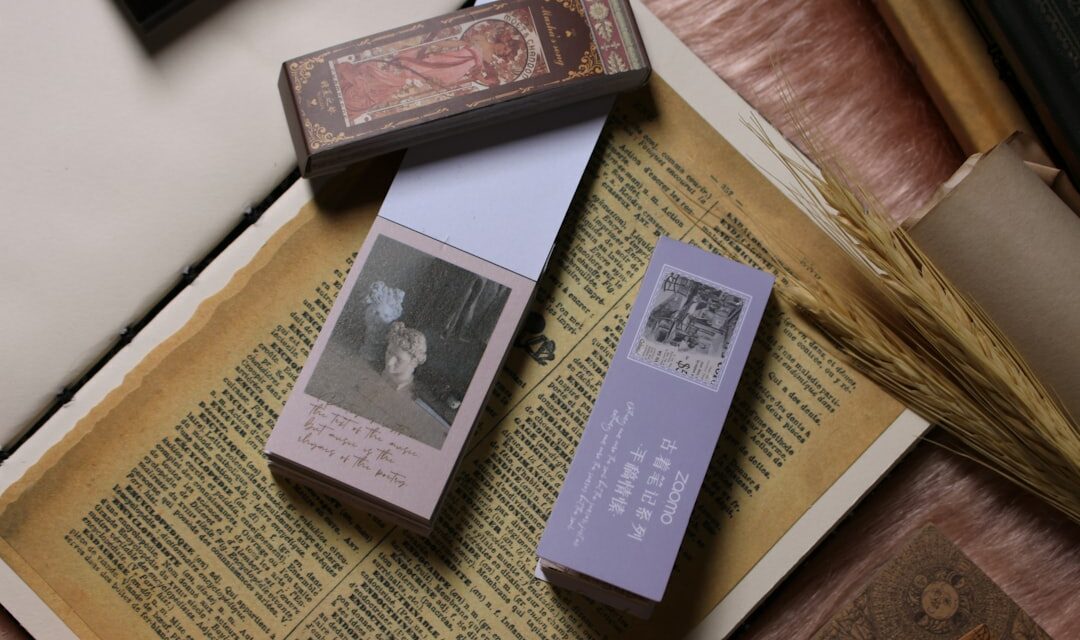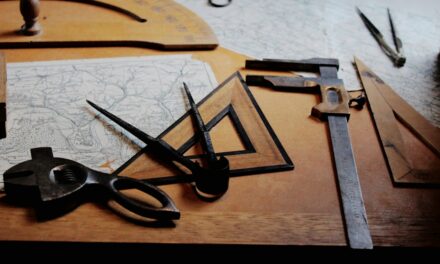The art of collage has a rich and varied history that dates back to ancient times, although it gained significant prominence in the early 20th century. The term “collage” is derived from the French word “coller,” meaning “to glue.” This technique was first employed by artists in the early 1900s, particularly by the Cubists, who sought to break away from traditional forms of representation. Pioneers such as Pablo Picasso and Georges Braque began incorporating everyday materials like newspaper clippings, fabric, and other found objects into their works, creating a new visual language that challenged conventional artistic norms.
This innovative approach not only transformed the way art was perceived but also laid the groundwork for future movements, including Dadaism and Surrealism, which further embraced the idea of juxtaposing disparate elements to evoke new meanings. As the 20th century progressed, collage continued to evolve, reflecting the changing social and political landscapes of the time. Artists like Hannah Höch and Kurt Schwitters expanded the boundaries of collage by integrating elements of photomontage and assemblage into their work.
Höch, a key figure in the Dada movement, used collage to critique societal norms and gender roles, while Schwitters developed his own unique style known as “Merz,” which involved the use of discarded materials to create intricate compositions. The post-war era saw a resurgence of interest in collage, with artists such as Robert Rauschenberg and Jasper Johns incorporating found objects into their paintings, further blurring the lines between fine art and everyday life. Today, collage remains a vital and dynamic form of artistic expression, continually adapting to contemporary themes and technologies.
Summary
- Collage art has a rich history dating back to the early 20th century, with artists like Pablo Picasso and Georges Braque pioneering the technique.
- Materials and tools for collage art can range from traditional paper and glue to more unconventional items like fabric, photographs, and found objects.
- Techniques for creating collage art include layering, tearing, and cutting materials, as well as experimenting with different adhesives and textures.
- Finding inspiration for collage art can come from everyday objects, nature, personal experiences, and even other works of art.
- Exploring different styles and approaches to collage art, such as surrealism, abstract, and mixed media, can help artists develop their own unique aesthetic.
Materials and Tools for Collage
Traditional Materials in Collage Art
Creating a collage requires a diverse array of materials and tools that can enhance the artistic process and contribute to the overall aesthetic of the piece. Traditional materials often include paper, photographs, fabric, and various found objects. Paper can range from magazines and newspapers to handmade papers or even old books, each offering unique textures and colours that can add depth to a collage.
Exploring Texture and Form
Photographs, whether personal or sourced from archives, can serve as focal points or background elements, while fabric can introduce tactile qualities that engage viewers on multiple sensory levels. Additionally, artists may choose to incorporate unconventional materials such as metal scraps, plastic items, or natural elements like leaves and flowers, allowing for an even broader exploration of texture and form.
Tools of the Trade
In terms of tools, a basic collage kit typically includes scissors, glue or adhesive tape, and a cutting mat for precision. However, artists often expand their toolkit to include craft knives for intricate cuts, tweezers for handling small pieces, and various types of adhesives such as Mod Podge or gel medium for different effects. Paints and markers can also be employed to add colour or detail to the composition.
Embracing Digital Techniques
Furthermore, digital tools have revolutionised the collage-making process; software like Adobe Photoshop allows artists to manipulate images and create digital collages that can be printed or displayed online. This blend of traditional and modern techniques opens up endless possibilities for creativity in collage art.
Techniques and Methods for Creating Collage Art

The techniques employed in creating collage art are as varied as the materials used. One fundamental method is layering, where different elements are placed on top of one another to create depth and complexity. This technique allows artists to play with transparency and opacity, enabling them to create visually engaging compositions that draw the viewer’s eye across the piece.
Additionally, artists may utilise techniques such as tearing or cutting shapes from their materials to create dynamic edges that contrast with the smoothness of other elements. The interplay between sharp lines and soft textures can evoke a sense of movement within the artwork, making it more compelling. Another popular method is the use of juxtaposition, where contrasting images or themes are placed side by side to provoke thought or convey a message.
This technique can be particularly powerful in political or social commentary collages, where the artist aims to challenge perceptions or highlight contradictions within society. Furthermore, artists may experiment with mixed media approaches by combining collage with painting or drawing. This fusion allows for greater expression and can lead to unexpected results that enhance the overall impact of the artwork.
Ultimately, the techniques employed in collage are limited only by the artist’s imagination, encouraging a spirit of experimentation that is central to this art form.
Finding Inspiration for Collage Art
Inspiration for collage art can be found in a multitude of sources, ranging from nature to literature and personal experiences. Many artists begin their creative process by collecting materials that resonate with them—this could include snippets from magazines that evoke certain emotions or photographs that capture fleeting moments. Nature itself serves as an abundant source of inspiration; artists may find themselves drawn to the colours and textures found in leaves, flowers, or even urban landscapes.
By observing their surroundings with a keen eye, artists can gather elements that speak to their artistic vision and contribute to a cohesive narrative within their collages. Moreover, literature and art history can provide rich veins of inspiration for collage artists. Exploring themes from poetry or prose can lead to visual interpretations that encapsulate complex ideas in a single image.
Additionally, studying the works of past masters can spark new ideas; understanding how previous artists approached collage can inform contemporary practices. Social issues and current events also serve as powerful motivators for many artists; responding to the world around them through their work allows them to engage with pressing topics while expressing their unique perspectives. Ultimately, inspiration is a deeply personal journey that varies from artist to artist, making each collage a reflection of individual experiences and insights.
Exploring Different Styles and Approaches to Collage
Collage encompasses a wide range of styles and approaches, each offering distinct ways for artists to express their ideas. One prominent style is photomontage, which involves combining photographs in unexpected ways to create new narratives or commentaries on reality. Artists like John Heartfield used photomontage as a political tool during the early 20th century, crafting powerful images that critiqued fascism and war.
In contrast, abstract collage focuses on form and colour rather than representational imagery; artists may use shapes and textures purely for their aesthetic qualities rather than any narrative purpose. This approach allows for greater freedom in expression and invites viewers to interpret the work on a more instinctual level. Another fascinating approach is digital collage, which has gained popularity with advancements in technology.
Digital artists utilise software tools to manipulate images seamlessly, creating intricate compositions that would be challenging to achieve with traditional methods alone. This style often blurs the lines between photography and painting, resulting in visually striking pieces that can be easily shared across digital platforms. Additionally, some contemporary artists explore eco-collage by using recycled materials or natural elements in their work; this approach not only promotes sustainability but also encourages viewers to consider their relationship with the environment.
Each style offers unique opportunities for exploration and expression within the realm of collage art.
Tips for Creating Effective and Visually Appealing Collage Art

Understanding the Fundamentals of Collage Art
Creating effective collage art requires both technical skill and an understanding of visual composition principles. One essential tip is to consider balance within the artwork; this involves distributing visual weight evenly across the composition so that no single area feels too heavy or overwhelming. Artists can achieve balance through colour harmony, size variation, and strategic placement of elements.
Enhancing the Impact of Your Collage
Additionally, employing a focal point – an area that draws the viewer’s attention – can enhance the overall impact of the piece. This could be achieved through contrasting colours or by placing an important element at eye level. Another crucial aspect is experimentation; allowing oneself to play with different materials and techniques can lead to unexpected discoveries that enrich the artwork.
Embracing Creativity and Spontaneity
Artists should not shy away from making bold choices – whether it’s using vibrant colours or unconventional materials – as these decisions often result in more engaging pieces. Furthermore, taking breaks during the creative process can provide fresh perspectives; stepping back allows artists to assess their work critically and make necessary adjustments before finalising their collages.
Creating Visually Appealing Outcomes
Ultimately, embracing both structure and spontaneity will lead to more visually appealing outcomes that resonate with viewers.
The Role of Collage in Contemporary Art
In contemporary art, collage plays a significant role as both a medium and a conceptual framework for exploring complex themes. Many contemporary artists utilise collage techniques to address issues such as identity, consumerism, and cultural appropriation. By layering images from various sources—ranging from advertisements to historical photographs—artists can create multifaceted narratives that reflect the complexities of modern life.
This approach not only challenges traditional notions of authorship but also invites viewers to engage critically with the content presented before them. Moreover, collage has become increasingly relevant in discussions surrounding digital culture; as our lives become more intertwined with technology, artists are responding by incorporating digital elements into their collages. The rise of social media has also influenced how collages are created and shared; platforms like Instagram allow artists to reach wider audiences while experimenting with new forms of visual storytelling.
In this context, collage serves as a powerful tool for commentary on contemporary society—its ability to juxtapose disparate elements makes it particularly effective in highlighting contradictions inherent in modern existence.
Resources for Learning More About Collage Art
For those interested in delving deeper into the world of collage art, numerous resources are available that cater to various learning styles. Books on collage techniques often provide step-by-step instructions alongside inspiring examples from renowned artists; titles such as “Collage: Contemporary Artists Hunt and Gather” offer insights into both traditional methods and modern interpretations of this versatile medium. Online platforms like Skillshare or Udemy feature courses taught by experienced artists who guide learners through different aspects of collage creation—from material selection to advanced techniques.
Additionally, visiting galleries or museums that showcase collage works can provide invaluable exposure to diverse styles and approaches within this art form. Many institutions also host workshops or artist talks where participants can engage directly with practitioners in the field. Online communities dedicated to collage art—such as forums or social media groups—allow enthusiasts to share their work while receiving feedback from peers.
By exploring these resources, aspiring artists can cultivate their skills while gaining inspiration from both historical contexts and contemporary practices within the realm of collage art.
For those intrigued by the diverse techniques in art, exploring the collage method can be quite enlightening. If you’re interested in further broadening your understanding of artistic styles, you might find the exploration of Expressionism equally captivating. Expressionism, like collage, offers a unique lens through which artists express their emotions and view of the world, often veering away from realistic depictions. To delve deeper into this fascinating art movement, you can read more about it here. This article provides a comprehensive introduction to Expressionism, paralleling how different art techniques and movements allow artists to convey profound personal and universal messages.




